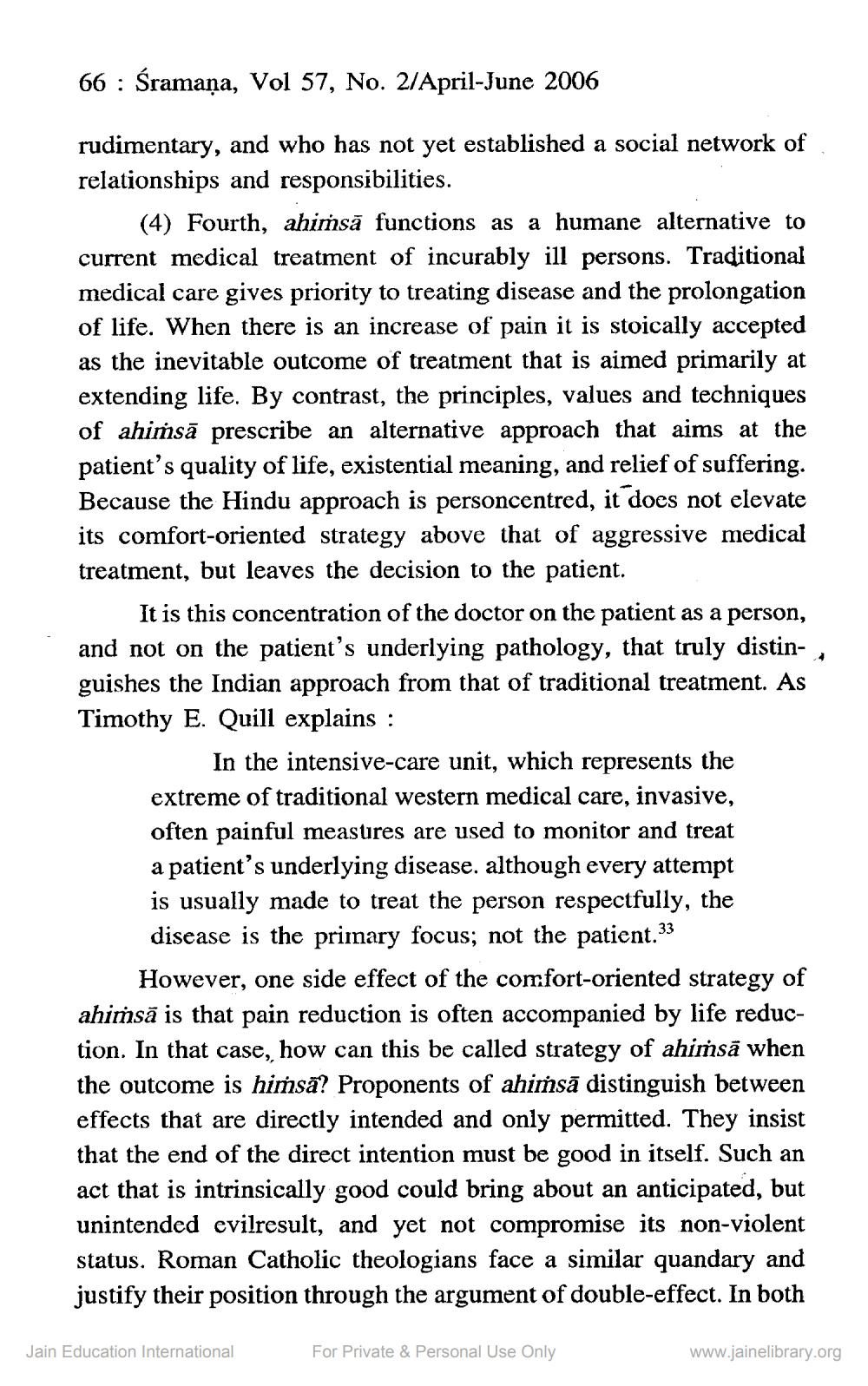________________
66 : Śramaņa, Vol 57, No. 2/April-June 2006
rudimentary, and who has not yet established a social network of relationships and responsibilities.
(4) Fourth, ahimsă functions as a humane alternative to current medical treatment of incurably ill persons. Traditional medical care gives priority to treating disease and the prolongation of life. When there is an increase of pain it is stoically accepted as the inevitable outcome of treatment that is aimed primarily at extending life. By contrast, the principles, values and techniques of ahiṁsā prescribe an alternative approach that aims at the patient's quality of life, existential meaning, and relief of suffering. Because the Hindu approach is personcentred, it does not elevate its comfort-oriented strategy above that of aggressive medical treatment, but leaves the decision to the patient.
It is this concentration of the doctor on the patient as a person, and not on the patient's underlying pathology, that truly distinguishes the Indian approach from that of traditional treatment. As Timothy E. Quill explains :
In the intensive-care unit, which represents the extreme of traditional western medical care, invasive, often painful measures are used to monitor and treat a patient's underlying disease. although every attempt is usually made to treat the person respectfully, the disease is the primary focus; not the patient. 33
However, one side effect of the comfort-oriented strategy of ahimsă is that pain reduction is often accompanied by life reduction. In that case, how can this be called strategy of ahiṁsā when the outcome is himsā? Proponents of ahiṁsā distinguish between effects that are directly intended and only permitted. They insist that the end of the direct intention must be good in itself. Such an act that is intrinsically good could bring about an anticipated, but unintended evilresult, and yet not compromise its non-violent status. Roman Catholic theologians face a similar quandary and justify their position through the argument of double-effect. In both
Jain Education International
For Private & Personal Use Only
www.jainelibrary.org




